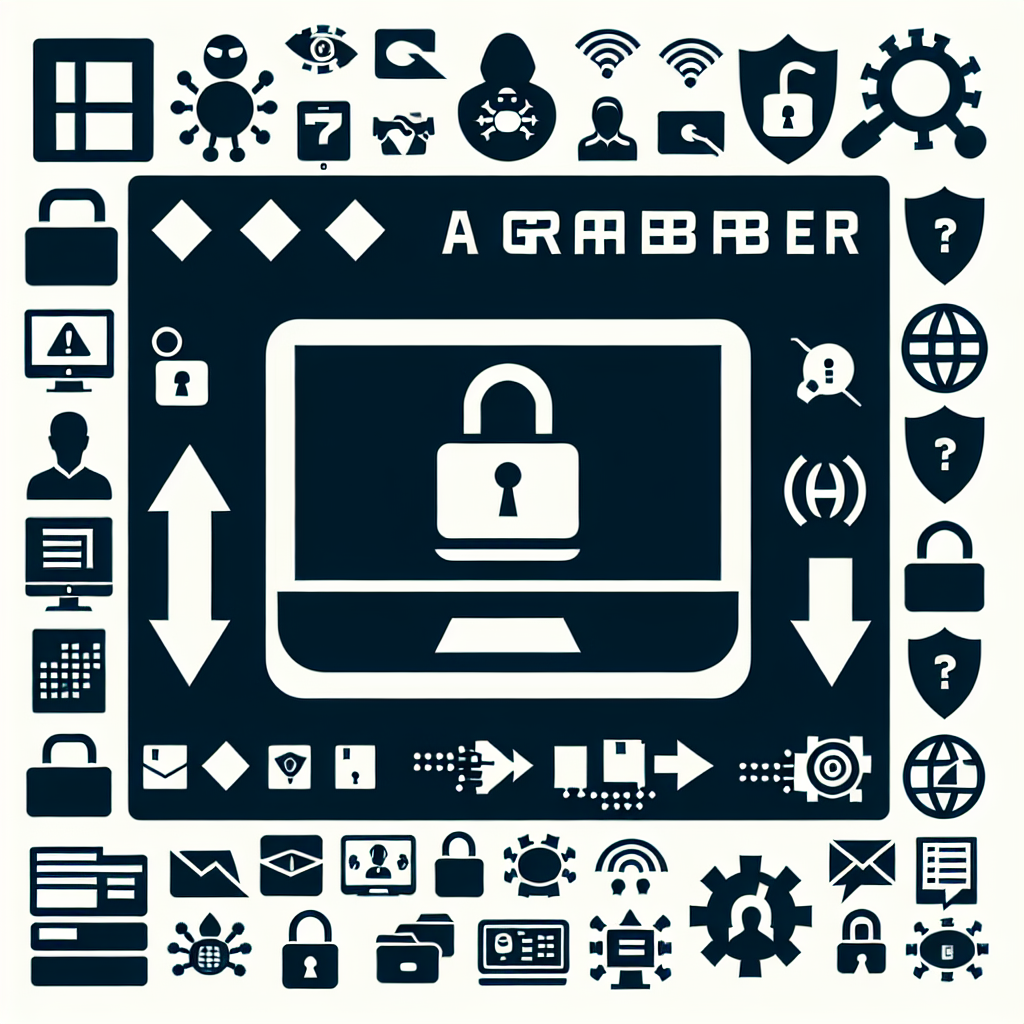
A grabber is a stealthy form of malware built to capture sensitive information from devices and forward it to attackers. These programs harvest credentials, browser cookies, form inputs, and sometimes system details so bad actors can expand access or sell data. This article breaks down common grabber behaviors, delivery methods, detection indicators, and practical mitigations for IT teams and security practitioners.

At its core: a grabber silently collects sensitive data and sends it to an attacker. It can read keystrokes, intercept form submissions, extract saved credentials from browsers, and grab session cookies that enable account hijacking. Many variants batch up findings and exfiltrate them to a command-and-control server on a schedule or when triggered. They are often light on disk footprint and avoid noisy behavior to evade detection by endpoint tools.
Short answer: a grabber is broader than a keylogger. Keyloggers focus on recording keystrokes only, while grabbers collect many data types—forms, cookies, browser-stored credentials, and system info. Some grabbers include keylogging modules, but they also parse browser files and memory to extract saved secrets. For defenders, that means blocking keystrokes alone won’t stop a full-featured grabber.
They go after high-value artefacts: usernames and passwords, credit card numbers, authentication cookies, form data, and API keys. Browser cookies are especially valuable because stolen session tokens can bypass passwords and allow immediate account access. In enterprise incidents, attackers often prioritize credentials for admin consoles, VPNs, and email accounts. The stolen data is reused for account takeover, lateral movement, or resale on criminal markets.
Most infections start with social engineering or malicious binaries. Common delivery vectors include phishing emails with attachments, fake installers, pirated software, or browser extensions bundled with malicious code. Drive-by downloads and compromised websites can also drop grabbers via exploit kits or malicious scripts. Once executed, they try to persist and blend with normal application behavior to remain active.
Grabbers can affect Windows, macOS, Linux, and mobile platforms—no system is immune. The majority of public reports involve Windows due to its large install base, but macOS and Android-targeted families are increasingly common. Many grabbers are written in cross-platform languages or delivered as scripts that run inside browsers or interpreters. That broad compatibility increases their appeal to threat actors.
Visible clues are subtle, but you can spot them: unexpected CPU spikes, strange background processes, random browser behavior, unexplained logins from new locations, or changes to stored credentials and sessions. Security logs showing data exfiltration, unusual outbound connections, or suspicious process spawning are red flags. Because grabbers try to be quiet, baseline endpoint monitoring and SIEM alerts are essential for detection.
Immediate removal requires isolation, forensic analysis, and credential resets. First: isolate the affected system from the network to prevent further exfiltration. Use reputable endpoint detection and response tools to identify and remove the binary and related persistence entries. After cleanup, rotate all affected credentials, revoke compromised sessions, and monitor for repeat access; in many cases, full image restore is the safest recovery path.
Start with layered defenses: keep systems patched, block risky extensions, and enforce least privilege. Use strong, unique passwords plus multi-factor authentication (MFA) to reduce the value of stolen credentials. Deploy endpoint protection with behavioral detection, apply network egress filtering, and run regular phishing simulations to harden your users. For organizations, invest in continuous monitoring and threat hunting to spot low-and-slow exfiltration early. Learn more about Palisade endpoint protection at Palisade endpoint protection.
Grabbers are often an initial tool for reconnaissance and credential theft. Attackers use harvested credentials and session tokens to expand access, move laterally, and identify high-value systems before deploying ransomware or data theft tools. Stolen credentials also let attackers disable security controls and maintain persistence. In short: grabbers increase the stakes—what begins as credential theft can escalate into a full breach.
Yes—cookies can hold session tokens that authenticate users without re-entering passwords. If an attacker captures a valid session token, they can impersonate the user until that token expires or is revoked. That’s why cookie-grabbing is a favored tactic for immediate account takeover. Proper session management—short lifetimes and token revocation—reduces this risk significantly.
Impact ranges from credential abuse and fraud to large-scale breaches and regulatory fines. Compromised admin accounts or email systems can enable data exfiltration, financial theft, or supply-chain compromises. Recovery costs include technical remediation, credential rotation, legal obligations, and reputational damage. For enterprises, proactive detection and rapid incident response dramatically reduce downstream losses.
Prioritize multi-layered controls: patch management, endpoint detection, MFA, and least privilege. Regularly review browser extension policies, enforce password hygiene, and run user awareness training focused on social engineering. Implement egress monitoring and alerting for anomalous uploads or connections. Finally, ensure incident response plans include credential rotation and session revocation steps.
It can be immediate—some families send data as soon as they capture it, while others batch and exfiltrate periodically to avoid detection. Speed varies by design and operator strategy.
Traditional antivirus may catch known variants, but modern grabbers use obfuscation and polymorphism to evade signature-based defenses. Behavioral EDR that looks for unusual process behavior and network patterns is more effective.
Only install extensions from trusted publishers and review requested permissions. Many malicious extensions disguise themselves as useful tools; enforce extension whitelists and enterprise browser policies where possible.
Yes—reset affected passwords and revoke active sessions immediately. Assume any saved or entered credentials may have been exposed until forensic analysis proves otherwise.
Yes—mobile-specific infostealers and malicious apps can act like grabbers, harvesting tokens, SMS codes, and app credentials. Use mobile threat defense, app vetting, and strong device policies to mitigate risk.